I'm trying to bring my OpenGL code up to speed with Direct State access and have been closely following the code from Guide to Modern OpenGL Functions. I have a little test project with some vertices and colors in the form of:
std::vector<float> vertices;
for (float y = -1.0f; y < 1.1f; y += 1.0f) {
for (float x = -1.0f; x < 1.1f; x += 1.0f) {
vertices.emplace_back(x);
vertices.emplace_back(y);
vertices.emplace_back(0.5f);
vertices.emplace_back(0.5f);
vertices.emplace_back(0.5f);
}
}
A visual representation of those vertices and their indices:
My main draw code is something like this:
unsigned int vbo = 0;
glCreateBuffers(1, &vbo);
glNamedBufferStorage(vbo, sizeof(float) * vertices.size(), vertices.data(), GL_DYNAMIC_STORAGE_BIT);
// Indices
unsigned int indices[]{ 0,1,3,5,8,7 };
unsigned int ibo = 0;
glCreateBuffers(1, &ibo);
glNamedBufferStorage(ibo, sizeof(unsigned int) * 6, indices, GL_DYNAMIC_STORAGE_BIT);
int bindingindex_a = 1;
int bindingindex_b = 2;
int pos_location = 3;
int color_location = 4;
unsigned int vao = 0;
glCreateVertexArrays(1, &vao);
glVertexArrayVertexBuffer(vao, bindingindex_a, vbo, 0, 5 * sizeof(float));
glVertexArrayVertexBuffer(vao, bindingindex_b, vbo, 0, 5 * sizeof(float));
glVertexArrayElementBuffer(vao, ibo);
glEnableVertexArrayAttrib(vao, pos_location);
glEnableVertexArrayAttrib(vao, color_location);
glVertexArrayAttribFormat(vao, pos_location, 2, GL_FLOAT, GL_FALSE, 0);
glVertexArrayAttribFormat(vao, color_location, 3, GL_FLOAT, GL_FALSE, 2*sizeof(float));
glVertexArrayAttribBinding(vao, pos_location, bindingindex_a);
glVertexArrayAttribBinding(vao, color_location, bindingindex_b);
So I'm drawing two gray triangles with the indices 0,1,3 and 5,8,7. Attribute locations in my shader are specified as in the cpp code:
layout (location = 3) in vec2 pos;
layout (location = 4) in vec3 col;
And this works!:
Even when I increase the difficulty and add a single float value in front, I can adjust the offset in the glVertexArrayVertexBuffer() function by 4 bytes.
The problem is when I want to go from buffer layout A to B:
I adjust my data filling loop to first write the positions, then the colors:
for (float y = -1.0f; y < 1.1f; y += 1.0f) {
for (float x = -1.0f; x < 1.1f; x += 1.0f) {
vertices.emplace_back(x);
vertices.emplace_back(y);
}
}
for (float y = -1.0f; y < 1.1f; y += 1.0f) {
for (float x = -1.0f; x < 1.1f; x += 1.0f) {
vertices.emplace_back(0.5f);
vertices.emplace_back(0.5f);
vertices.emplace_back(0.5f);
}
}
and adjust the calls to glVertexArrayVertexBuffer() and glVertexArrayAttribFormat():
glVertexArrayVertexBuffer(vao, bindingindex_a, vbo, 0, 2 * sizeof(float));
glVertexArrayVertexBuffer(vao, bindingindex_b, vbo, 18*sizeof(float), 3 * sizeof(float));
glVertexArrayAttribFormat(vao, pos_location, 2, GL_FLOAT, GL_FALSE, 0);
glVertexArrayAttribFormat(vao, color_location, 3, GL_FLOAT, GL_FALSE, 0);
So now my global color offset is at 18 floats (9 positions times two components) and my relativeoffset (that's how khronos.org calls it) is at 0 for both. This displays grey things, but not the way they did before. My mental model of how these things work is obviously wrong - where?


